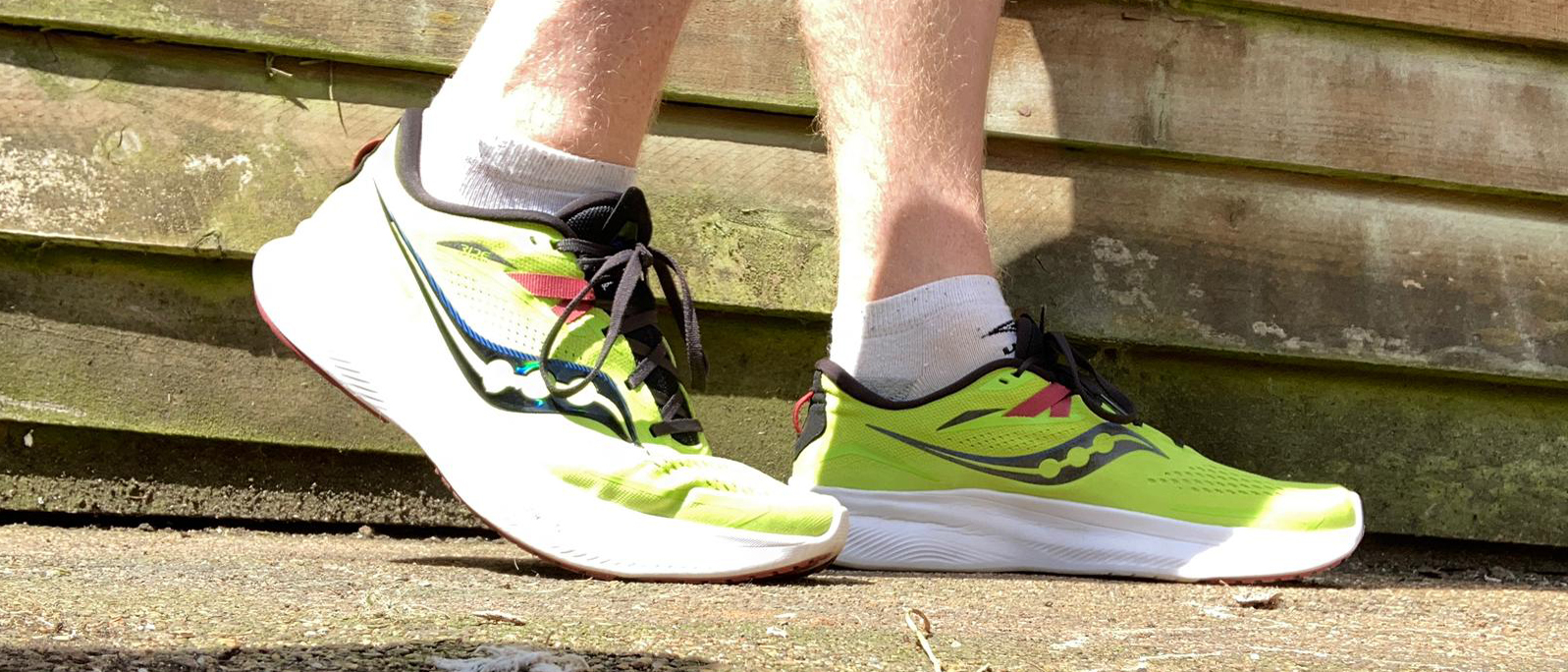Live Science Verdict
An almost-flawless everyday running shoe that does the basics brilliantly and incorporates great touches, such as midfoot straps, true-to-size fit and premium cushioning, too.
Pros
- +
Plenty of cushioning
- +
Lightweight and breathable
- +
Wide flares on midsole to encourage neutral strides
Cons
- -
Foam could feel more responsive
- -
Signs of wear on outsole
Why you can trust Live Science
The Saucony Ride 15 is a box-ticker when it comes to what you want from a top-quality everyday running shoes. Let us explain …
If you’re in the market for a new pair of regular running shoes, chances are you’re looking for comfort, cushioning, and a lightweight design to transform begrudging trudges into enjoyable jaunts. The Saucony Ride 15 has the attributes to achieve just this and (we think) look good doing it, too.
The shoe is lighter and more cushioned than its predecessor, the Saucony Ride 14, with PWRRUN foam in the midsole and a plush new PWRRUN+ insole providing a supportive and springy ride. It’s also one of the best running shoes for supination, thanks to its flared midsole that rises around the sides of the foot to provide a wide, supportive and stable base – promoting a neutral stride. This balance of support and cushioning felt fantastic for easy kilometers, leaving our knees feeling fresher than usual, post-run.
The way the shoe is structured, with additional underfoot contouring, means your foot sits deeper in the footbed. This, along with the effective lacing system and clever straps either side of the tongue, give the shoes an almost-personalized fit, making them feel as though they’d been tailor-made for us. As you’d expect, this meant they were incredibly comfortable.
To round off its impressive performance in our tests, hard rubber strips on the outsole provided greater grip than on previous versions and made the underside of the shoe feel more resilient, while its breathable mesh upper was able to keep our feet cool on an ill-advised 5K in soaring temperatures.
It’s for this collection of reasons that we think anyone seeking a consummate all-rounder to use as an everyday trainer will struggle to find a shoe to rival the Saucony Ride 15.
How we tested
We took the Saucony Ride 15s on a variety of runs – from easy miles to sprint intervals, fast 5Ks to endurance sessions – to see how they stacked up against other running shoes we’ve put through their paces.
Over the course of a few weeks, we racked up more than 30km in the shoes, compiling a detailed sheet of feedback that we used to rate the shoes’ build and cushioning, design and upper, outsole and performance at different speeds and distances. This data was then used to decide an overall score, with a maximum of five stars on the table.
Build and cushioning
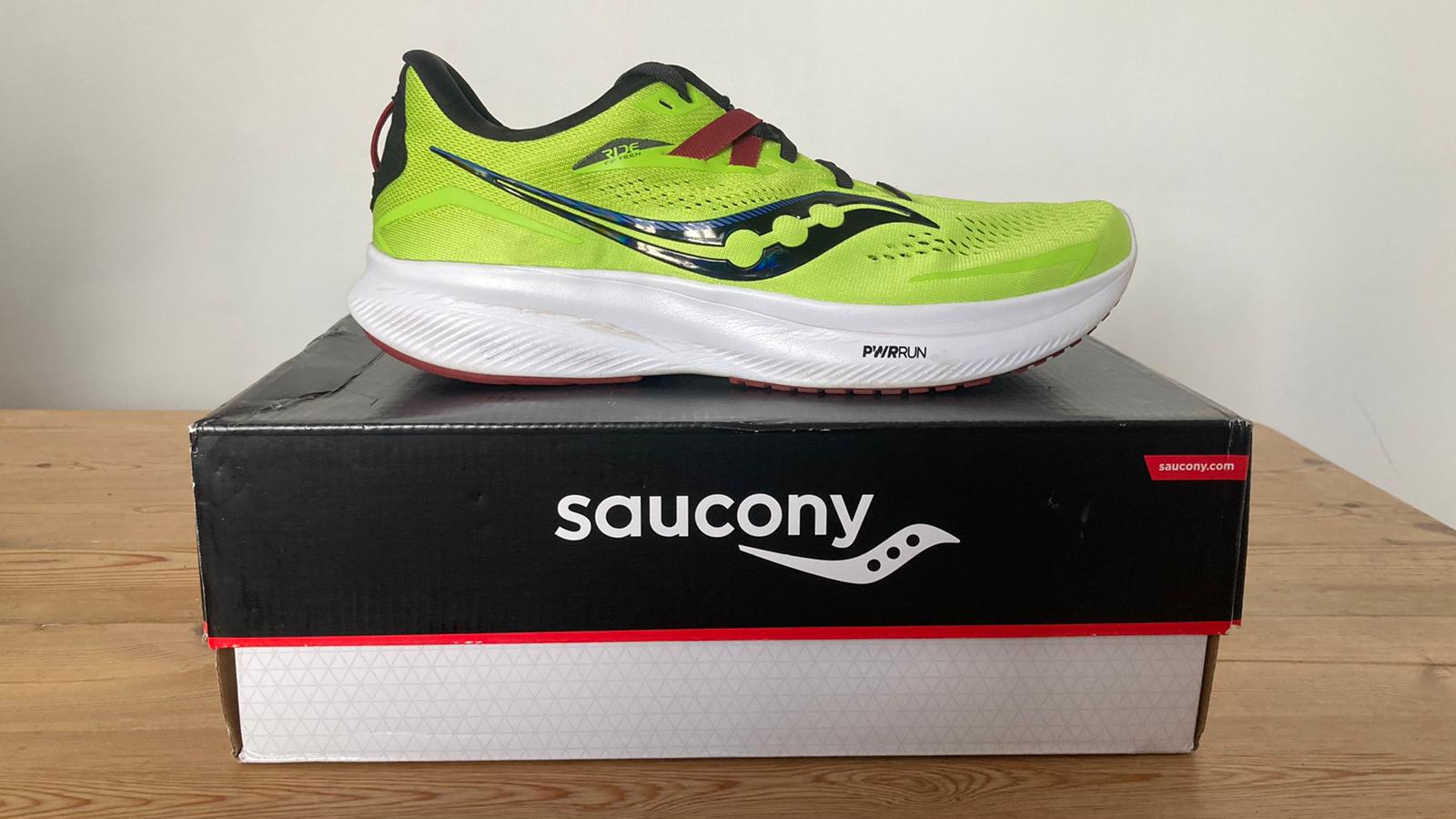
Have you ever tried to pat your head and rub your stomach at the same time? It can be tricky. So, too, is increasing the cushioning on a running shoe while making it lighter and more responsive. Yet that’s what Saucony has achieved in its update of the Ride 14.
During testing, we found the lightweight PWRRUN foam midsole provided a pillowy feeling appreciated by our knees, while still offering a springy responsiveness. This means you can run kilometer after kilometer in comfort, but there’s enough oomph under each stride if you want to push the pace on some training days. There is further cushioning because of the new, contoured PWRRUN+ insole, which seemed to mold to our foot.
It’s not just the well-balanced make-up of the midsole that impressed, either: its shape left us full of praise. The foam sidewalls rise higher around the edges of our feet than most running shoes, so your feet sit deeper within the shoe’s footbed, and the midsole flares around the heel and forefoot. This wide base and supportive sides combine to coax your feet into a neutral stride, preventing excessive pronation or supination and improving our running technique (there’s more to learning how to run properly than many people are aware).
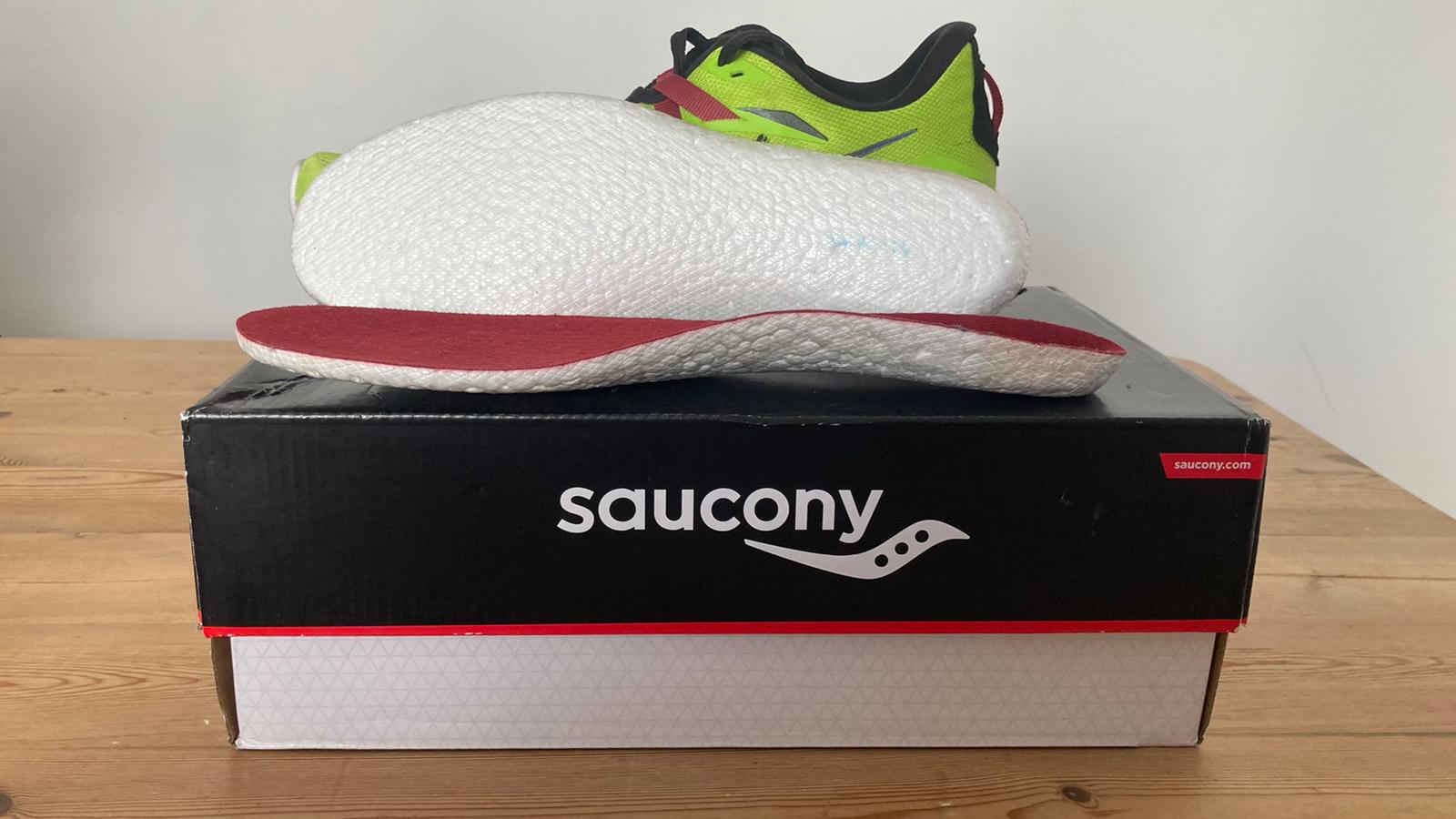
Make no mistake, the Saucony Ride 15s don’t have the same snappy soles as shoes custom-built for quicker paces, like the Saucony Endorphin Speed 2, but this isn’t what they’re built for. As an everyday trainer, they excel at speeds of 5min/km and above.
However, if you don’t want to splash the cash on several pairs of running shoes for specific purposes, the versatile Ride 15s are a great option. While longer runs are their bread and butter, a pacey 5K in our pair still felt far from sluggish thanks to the lightweight design.
They have an 8mm heel-to-toe drop (considered high), which tends to favor heel strikers (you can find out more about correct running foot placement with our guide). But our tester, who naturally adopts more of a midfoot strike, said their strides never felt unnatural.
Design and upper
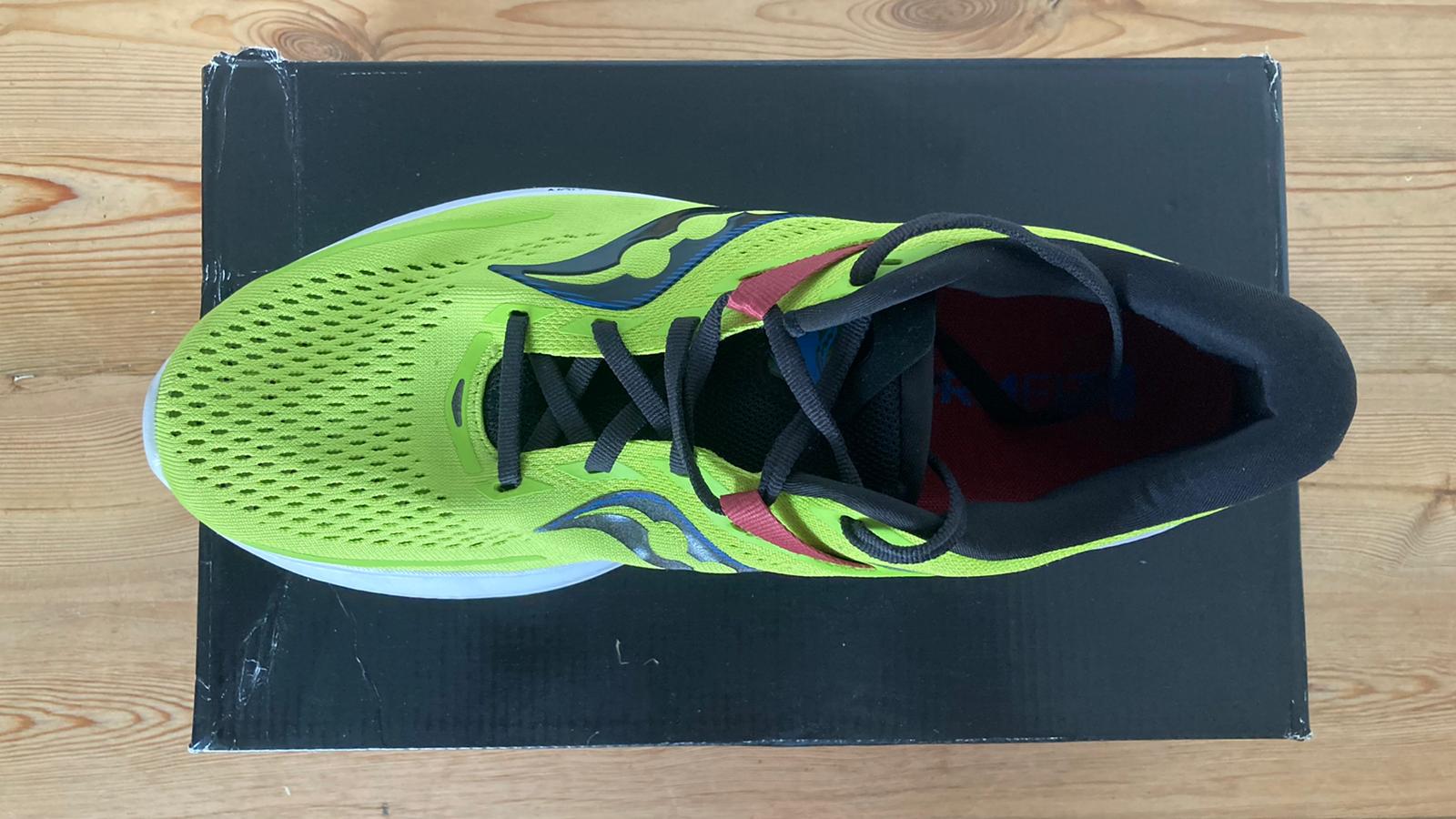
The first thing we noticed when unboxing our Saucony Ride 15s was the color. As the images show, the vibrant “acid lime” hue is hard to miss. If this isn’t to your taste, there are several less-garish options available, such as sapphire, cool mint, and black and white. But we liked the eye-catching design, which broke up the monotony of our black- and blue-dominant running wardrobe.
The Ride 15 adopts a lightweight, breathable mesh for its upper with plenty of perforations atop the toe box to help keep you cool. Or, in Saucony’s own words, it has “minimized layers for a sleek fit”.
We put this to the test by taking them out for a fast 5K on a hot day. By the end of the run, our T-shirt looked as though we’d worn it in the shower, but our feet remained at a comfortable temperature. In other words: the shoes passed our trial with flying colors.
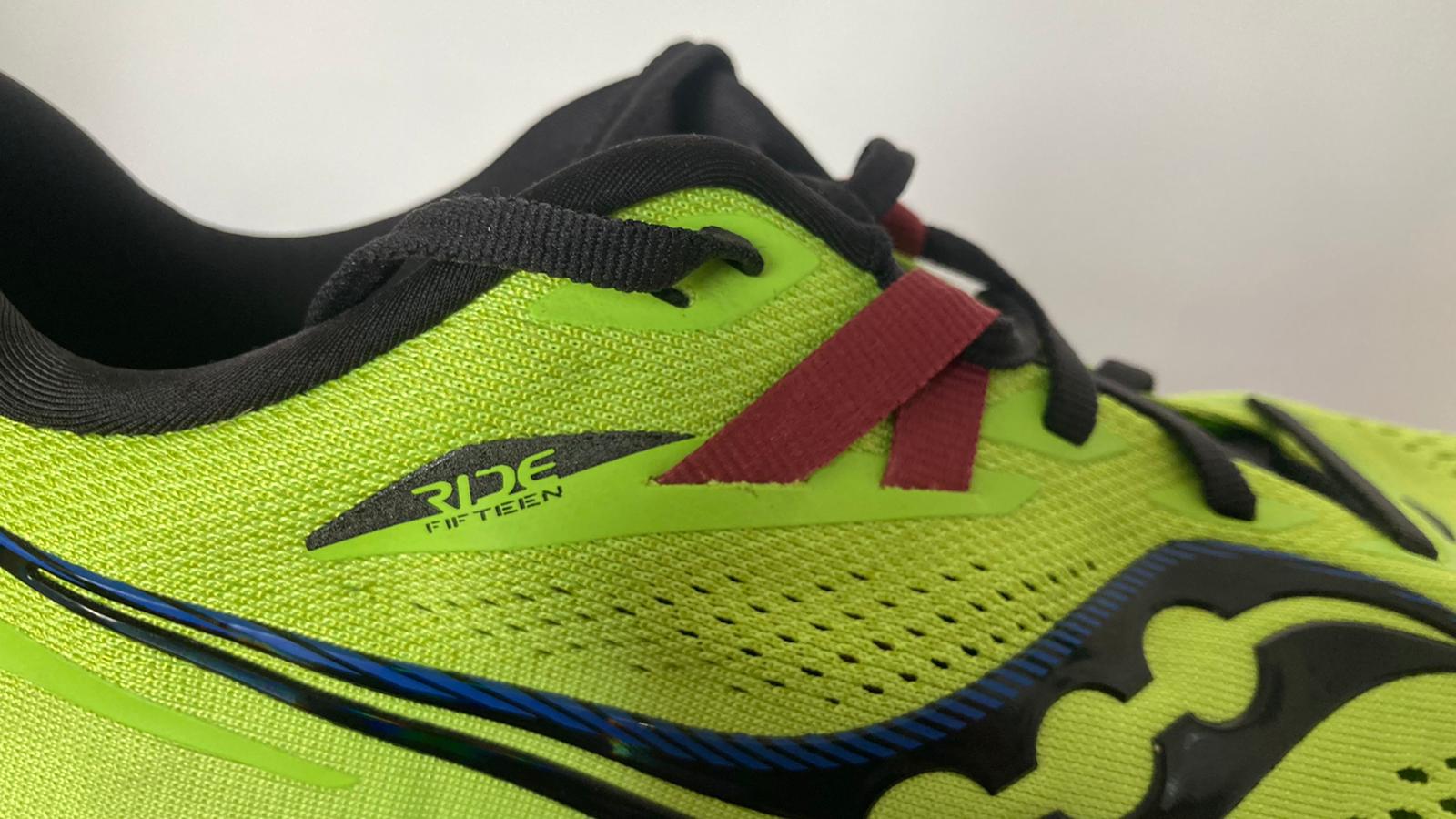
Padding around the heel and on the tongue meant we could wear the Ride 15 straight out of the box without risking blisters, yet it wasn’t so thick that it added unnecessary weight to the svelte 8.8oz/249g design – as was the case with the Nike Air Zoom Structure 24 we tested.
The overall design of the Saucony Ride 15s may seem basic to tech-lovers looking for fancy features, such as carbon solepates or Nike’s Air Zoom units. However, Saucony has instead made sure the basics are excellent – to deliver a top-notch everyday running shoe. That’s not to say that there aren’t a few thoughtful touches to elevate it above its competitors.
While the shoe is naturally wide and accommodating, our tester found it could be tightened to suit their narrower feet without any bunching or discomfort in the upper. This is partly thanks to midfoot straps (see the image below) found either side of the top of the tongue – a feature that has been added since the Ride 14. These extend down from the laces to the midsole, wrapping around the outsides of our feet and successfully pulling the walls of the shoe inwards, making sure our feet felt secure at any pace.
Combine this with the roomy toe box and true-to-size fit, and the upper’s premium levels of comfort left us with no complaints.
Outsole
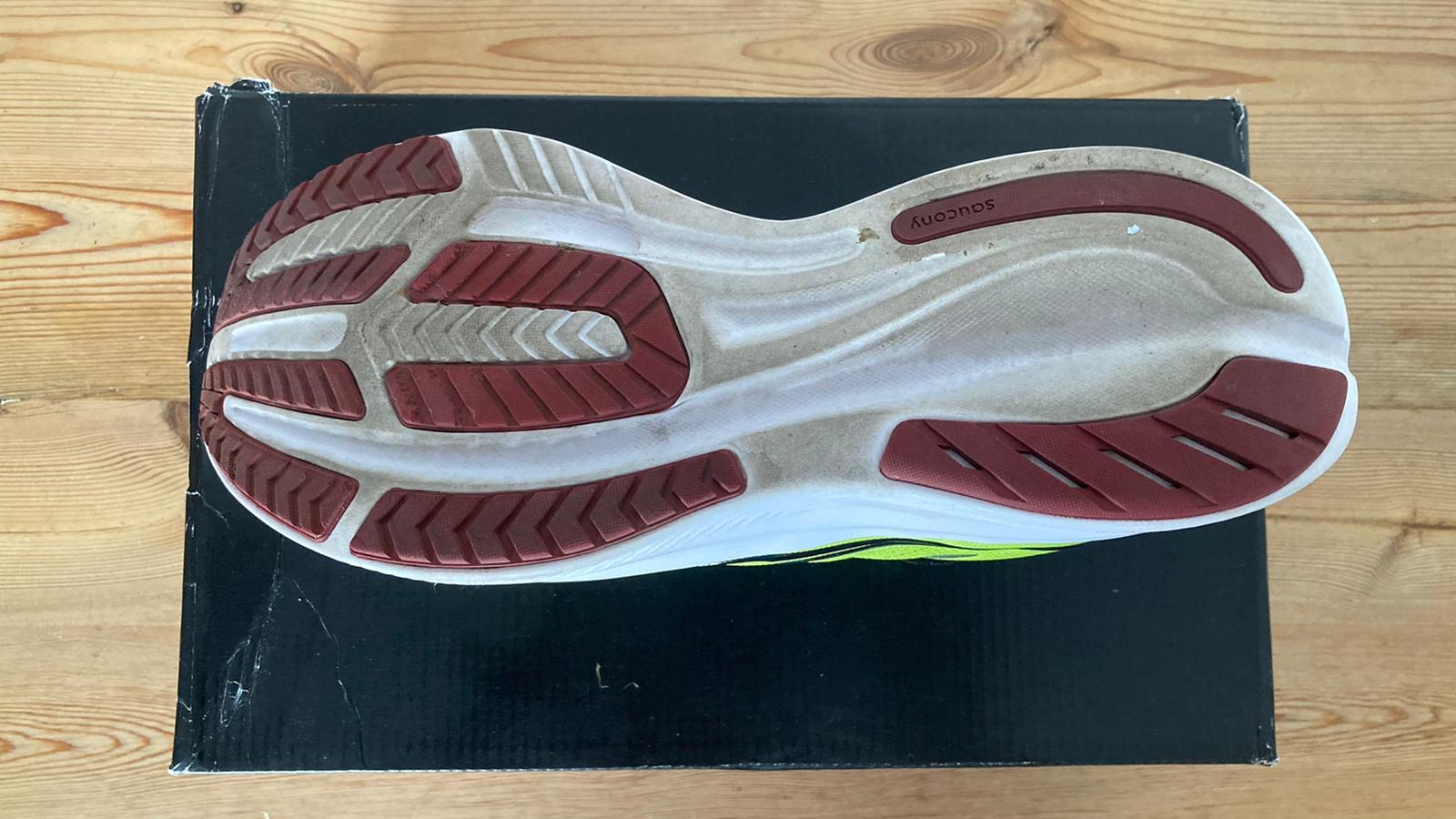
Much like the upper of the shoe, the Saucony Ride 15s outsole is understated yet effective. Thin layers of robust rubber are laid on top of the foam PWRRUN midsole’s underside in high-impact areas, such as the heel and toes, to make the shoes more hard-wearing. We found these provided excellent grip on tarmac, trails and even dewy grass, but still allowed for plenty of flex in the forefoot so we could assume a natural heel-to-toe transition.
While the Nike Air Zoom Structure 24’s fuller rubber outsole looked as good as new after being put through a fair few trial miles, there were signs of wear and tear on the Ride 15 around 30km into testing. As we only tested these shoes for a few weeks, we can’t speak for their longevity, but the light scuffs and indentations on the rubber outsole had no impact on performance.
Performance
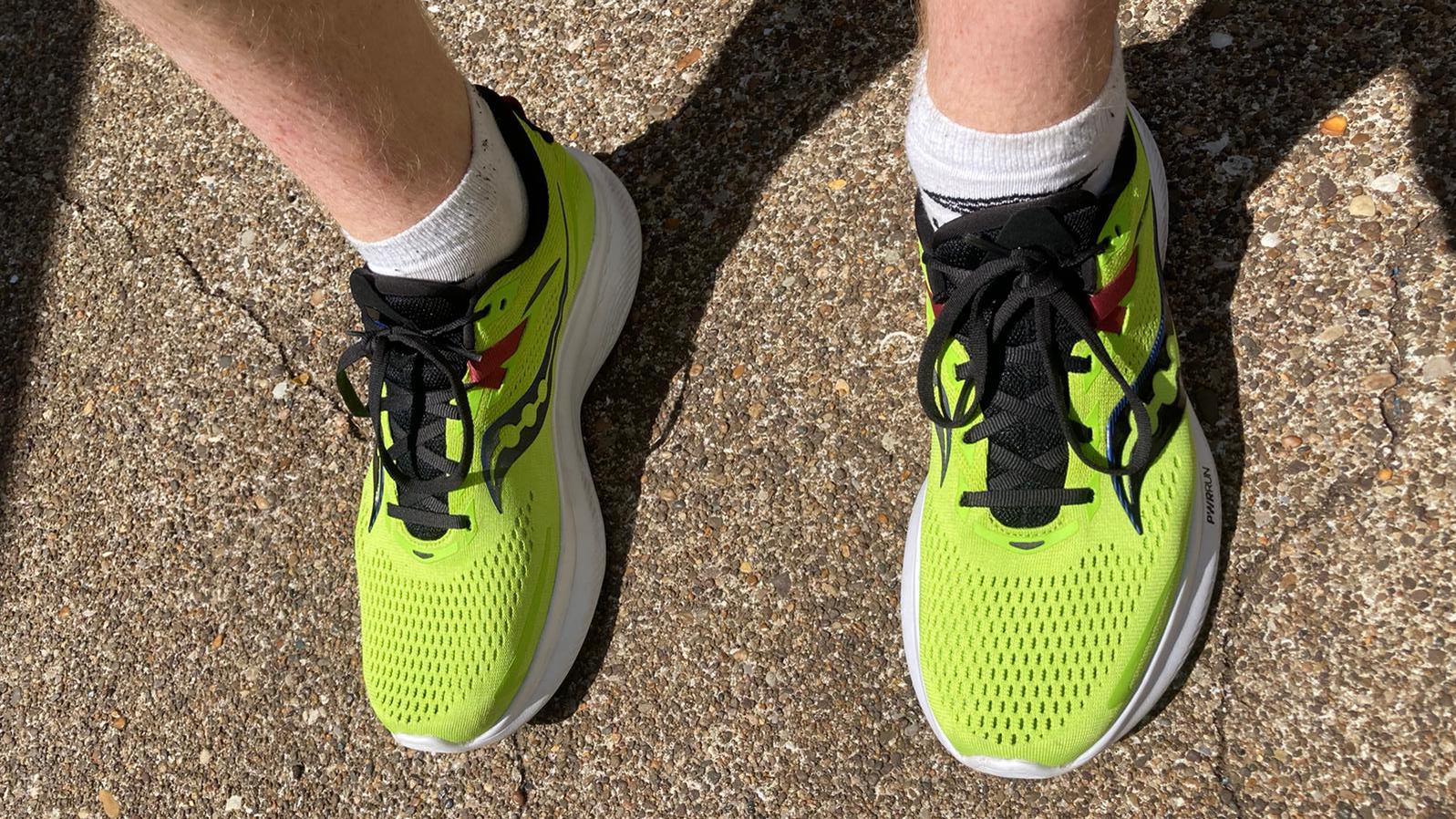
Saucony set out to make a great daily training partner capable of turning its hand to a range of runs, while prioritizing comfort. And the brand has hit the mark at nearly every turn.
The plush foam of the PWRRUN midsole and PWRRUN+ insole kept our knees ache-free during and after every run we took them on, but they’re not so pillowy that they feel wobbly or unstable. You can plant your feet with confidence and generate a good amount of power as you transition from heel-to-toe, ideal for mid-speed strides.
The shoes are supportive too, with a wide, flared midsole and raised foam sidewalls that coaxed us into a natural-feeling neutral stride. The accommodating upper fits true-to-size. And, because of innovative straps either side of the tongue, it wraps snugly around your feet without causing the upper to bunch, making the shoes feel almost custom-made.
If that’s not enough, they’re lightweight, too (weighing just 8.8oz/249g), considerably less than their predecessor, yet offering more cushioning). While the firm-but-fair foam may lack the responsiveness sought by shorter (5K and below) distance runners, it still provides more oomph than most everyday runners.
It’s for these reasons that we reckon anyone wanting a shoe that will see them through 10K PB attempts and recovery runs alike will be overjoyed with the Ride 15’s exemplary performance.
Verdict
As everyday running shoes go, we think there are few better than the Saucony Ride 15. It feels like it defies the odds to provide a midsole that’s cushioned-yet-lightweight and an upper that’s accommodating, yet able to wrap around narrow feet. The wide base and raised sidewalls encourage a neutral stride, good for anyone prone to pronation or supination, while the lacing system and clever straps around the sides of the shoe lock your foot down securely. So, if you’re after a jack-of-all-trades that can handle anything you throw at it, particularly mid-length distance runs and easy kilometers, then the Saucony Ride 15 is the running shoe for you.
Alternatives
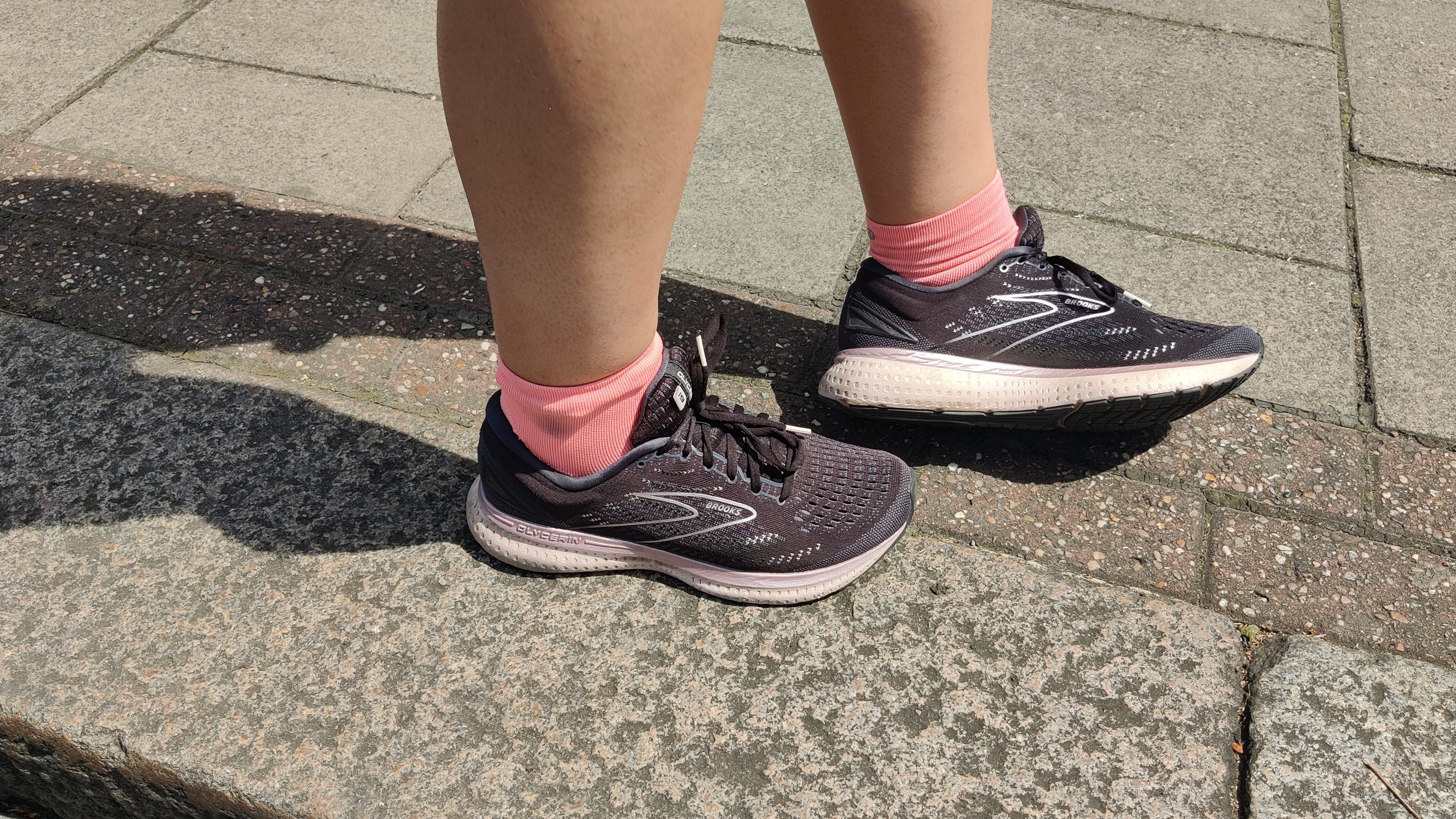
If you’re a relative running newcomer wanting even more cushioning for easy kilometers, the Brooks Glycerin 19 (above) is a fantastic option, with a substantial stack height and plush heel padding. If you’re susceptible to overpronation (where the foot rolls inward) then the Asics Gel Nimbus 24 may be worth a look, with its Trusstic tech under the arch to prevent your feet from twisting.

Harry Bullmore is a fitness writer covering everything from reviews to features for LiveScience, T3, TechRadar, Fit&Well and more. So, whether you’re looking for a new fitness tracker or wondering how to shave seconds off your 5K PB, chances are he’s written something to help you improve your training.
When not writing, he’s most likely to be found experimenting with a wide variety of training methods in his home gym or trying to exhaust his ever-energetic puppy.
Prior to joining Future, Harry wrote health and fitness product reviews for publications including Men’s Health, Women’s Health and Runner’s World. Before this, he spent three years as a news reporter with work in more than 70 national and regional newspapers.
